
Heraklion: A Gateway to Crete's Rich History and Vibrant Culture
Discover Heraklion, the vibrant capital of Crete, where ancient history meets modern culture. Explore Minoan ruins, savor local cuisine, and enjoy stunning coastal views.
Heraklion, the capital of Crete, is a city that seamlessly blends ancient history with modern allure. Located on the island's northern coast, Heraklion serves as a cultural and economic hub, offering visitors a wealth of experiences. From exploring the remnants of the Minoan civilization to savoring local cuisine, there is something for everyone in this dynamic city. One of the must-visit landmarks in Heraklion is the Palace of Knossos. This archaeological site is the largest Bronze Age archaeological site on Crete and is considered Europe's oldest city. Walking through its ruins, you can almost hear the whispers of ancient Minoan culture. The Heraklion Archaeological Museum, one of the most important museums in Greece, complements this experience by housing artifacts that span over 5,500 years of Cretan history. Heraklion's Venetian harbor and fortress are other historical gems that should not be missed. The Koules Fortress, standing guard over the harbor, offers spectacular views of the sea and the city. Stroll along the harbor to find a range of cafes and restaurants where you can enjoy fresh seafood while watching boats bob in the water. Modern Heraklion is equally captivating. The city boasts vibrant markets, bustling squares, and a lively nightlife. The pedestrian-friendly streets and squares, such as Lion Square with its iconic Morosini Fountain, are perfect for leisurely walks. Don't forget to explore the local shops and boutiques that offer unique Cretan products, from olive oil to handcrafted jewelry. For those interested in nature, Heraklion offers easy access to beautiful beaches and scenic landscapes. The nearby village of Archanes, set amidst vineyards and olive groves, provides an idyllic escape. Whether you're a history buff, a foodie, or a nature lover, Heraklion has something to offer.
Local tips in Heraklion
- Visit the Palace of Knossos early in the morning to avoid the crowds and the heat.
- Try local dishes such as dakos, kalitsounia, and Cretan cheese at traditional tavernas.
- Take a walk in the old town area to see Venetian architecture and explore hidden alleys.
- Bring comfortable walking shoes as many attractions are best explored on foot.
- Check local schedules for cultural events and festivals that often take place in summer.
Neighbourhoods in Heraklion
Heraklion: A Gateway to Crete's Rich History and Vibrant Culture
Heraklion, the capital of Crete, is a city that seamlessly blends ancient history with modern allure. Located on the island's northern coast, Heraklion serves as a cultural and economic hub, offering visitors a wealth of experiences. From exploring the remnants of the Minoan civilization to savoring local cuisine, there is something for everyone in this dynamic city. One of the must-visit landmarks in Heraklion is the Palace of Knossos. This archaeological site is the largest Bronze Age archaeological site on Crete and is considered Europe's oldest city. Walking through its ruins, you can almost hear the whispers of ancient Minoan culture. The Heraklion Archaeological Museum, one of the most important museums in Greece, complements this experience by housing artifacts that span over 5,500 years of Cretan history. Heraklion's Venetian harbor and fortress are other historical gems that should not be missed. The Koules Fortress, standing guard over the harbor, offers spectacular views of the sea and the city. Stroll along the harbor to find a range of cafes and restaurants where you can enjoy fresh seafood while watching boats bob in the water. Modern Heraklion is equally captivating. The city boasts vibrant markets, bustling squares, and a lively nightlife. The pedestrian-friendly streets and squares, such as Lion Square with its iconic Morosini Fountain, are perfect for leisurely walks. Don't forget to explore the local shops and boutiques that offer unique Cretan products, from olive oil to handcrafted jewelry. For those interested in nature, Heraklion offers easy access to beautiful beaches and scenic landscapes. The nearby village of Archanes, set amidst vineyards and olive groves, provides an idyllic escape. Whether you're a history buff, a foodie, or a nature lover, Heraklion has something to offer.
When is the best time to go to Heraklion?
Iconic landmarks you can’t miss
Heraklion Archaeological Museum
Explore the wonders of the Minoan civilization at the Heraklion Archaeological Museum, home to exquisite artifacts and rich history of Crete.

Morosini Fountain
Discover the enchanting Morosini Fountain, a historical gem in the heart of Heraklion, showcasing Venetian craftsmanship and lively local culture.

Rocca a Mare Fortress
Discover the rich history and stunning architecture of the Rocca a Mare Fortress in Heraklion, a captivating landmark of Venetian heritage.

Herakleion Venetian Port
Experience the enchanting Herakleion Venetian Port, a historical gem in Crete that offers stunning views, rich culture, and delightful local cuisine.

Natural History Museum of Crete
Explore the Natural History Museum of Crete, a fascinating journey through the island's rich biodiversity and geological history, perfect for all ages.

Church of Agios Minas
Discover the exquisite beauty and rich history of the Church of Agios Minas, a must-see cathedral in Heraklion, Crete.

Bembo fountain
Explore the Bembo Fountain in Heraklion: a captivating historical landmark reflecting the rich culture and vibrant atmosphere of Crete.

Saint Titus Herakleion Holy Orthodox Cathedral Church
Explore the stunning Saint Titus Herakleion Holy Orthodox Cathedral, a landmark of spiritual and architectural significance in the heart of Crete.

Nikos Kazantzakis Grave
Explore the serene Nikos Kazantzakis Grave in Heraklion, a poignant tribute to the literary legacy of Greece's most famous author.

Historical Museum of Crete
Explore the rich history of Crete at the Historical Museum, showcasing artifacts and art that span from ancient times to the modern era.

Venetian Walls of Heraklion
Discover the historical grandeur of the Venetian Walls of Heraklion, a captivating fortress offering stunning views and rich cultural heritage.

Museum of Ancient Greek Technology by Kotsanas
Discover the brilliance of ancient Greek inventions at the Museum of Ancient Greek Technology by Kotsanas in Heraklion, an enlightening journey for curious minds.

Kenouryia Porta
Discover the rich history of Heraklion at Kenouryia Porta, an iconic monument showcasing the architectural elegance of the Venetian period.

Venetian Loggia
Explore the Venetian Loggia, a stunning heritage building in Heraklion showcasing Venetian architecture and cultural significance.

Heraklion Lighthouse
Discover the enchanting Heraklion Lighthouse, a historic gem overlooking the harbor, perfect for picturesque strolls and stunning sunset views in Crete.
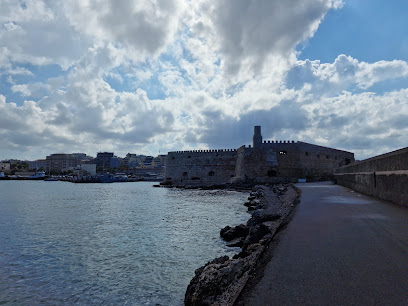
Unmissable attractions to see
Knossos Palace
Explore the ancient ruins of Knossos Palace, a magnificent archaeological site revealing the grandeur of Minoan civilization in Crete.

Heraklion Archaeological Museum
Explore the treasures of the Minoan civilization at the Heraklion Archaeological Museum, a premier destination in Crete showcasing ancient artifacts and rich history.

CRETAquarium Thalassokosmos
Explore the vibrant marine life at CRETAquarium Thalassokosmos, a top attraction in Heraklion showcasing the beauty of the Mediterranean.

Morosini Fountain
Discover the historical charm of Morosini Fountain in Heraklion, an iconic landmark that captures the essence of Crete's rich cultural heritage.

Rocca a Mare Fortress
Discover the rich history and stunning views at Rocca a Mare Fortress in Heraklion, a must-visit landmark on your Crete adventure.

Arkadi Monastery
Experience the historical and spiritual essence of Arkadi Monastery in Crete, a serene sanctuary steeped in history and architectural beauty.
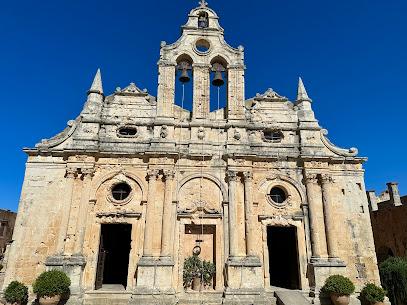
Cave of Diktaion Andron
Discover the enchanting Cave of Diktaion Andron, a mythical site in Crete where the legend of Zeus comes to life amidst breathtaking natural formations.

Heraklion Venetian Port
Explore the captivating Heraklion Venetian Port, a historical landmark where ancient architecture meets vibrant culture in the heart of Crete.

Minoan Palace of Phaistos
Discover the Minoan Palace of Phaistos, an ancient historical landmark in Crete, where history, culture, and stunning views come together.

Watercity Waterpark Crete
Experience the ultimate fun at Watercity Waterpark Crete, where thrilling rides meet relaxation in a stunning setting.

Melidoni Cave
Discover Melidoni Cave, a historical landmark in Crete filled with stunning geological formations and rich mythology, perfect for nature and history lovers.

Cathedral of Agios Minas
Explore the Cathedral of Agios Minas in Heraklion, a breathtaking example of Byzantine architecture and a significant Greek Orthodox church.

Natural History Museum of Crete
Explore the rich biodiversity and geological wonders at the Natural History Museum of Crete, a must-visit attraction for nature lovers in Heraklion.

Monastry of Saint George
Discover the serene Monastery of Saint George in Selinari, a blend of history, spirituality, and breathtaking landscapes that captivates every visitor.

Dinosauria Park
Explore Dinosauria Park in Gournes, Crete, where adventure meets education in a prehistoric playground filled with life-sized dinosaurs and thrilling rides.

Essential places to dine
Peskesi
Discover authentic Cretan cuisine at Peskesi in Heraklion – where every dish tells a story.

A Little Wine A Little Sea
Experience exquisite Mediterranean cuisine at 'A Little Wine A Little Sea', where fresh seafood meets traditional Greek flavors in Heraklion.

Apiri greek_eatery
Experience authentic Mediterranean flavors at Apiri Greek Eatery in Heraklion - where tradition meets modern cuisine.

KOUZEINERI
Discover KOUZEINERI in Heraklion: A delightful fusion of traditional Greek cuisine and modern flair awaits you.

Amalia's Kitchen
Experience authentic Cretan cuisine at Amalia's Kitchen in Heraklion—where tradition meets flavor in every dish.
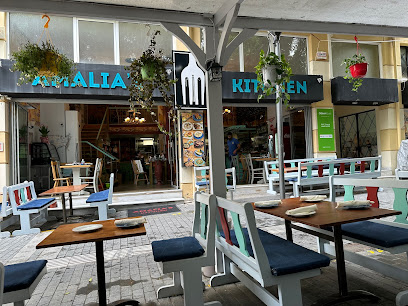
Koukouvagia
Discover authentic Greek cuisine at Koukouvagia in Heraklion – where tradition meets taste in every bite.

Καστέλλα- Kastella
Discover authentic Greek flavors at Kastella in Heraklion, where every dish tells a story of tradition and taste.

Ntoré Gastronomy
Experience exquisite Cretan cuisine at Ntoré Gastronomy in Heraklion - where tradition meets modern culinary artistry.
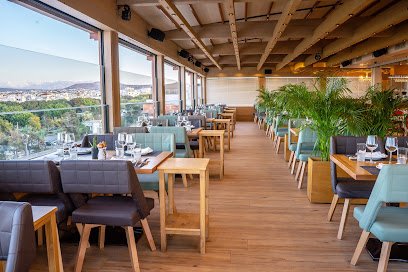
Alla ki Alla
Experience authentic Greek flavors at Alla ki Alla in Heraklion – where tradition meets deliciousness in every dish.

The chickpea
Discover authentic Mediterranean flavors at The Chickpea in Heraklion—where every dish tells a story of tradition and taste.

Minos Restaurant
Savor authentic Greek flavors at Minos Restaurant in Heraklion – where tradition meets taste in every delightful dish.

Veneto
Discover the heart of Greek cuisine at Veneto in Heraklion – where tradition meets flavor in every dish.
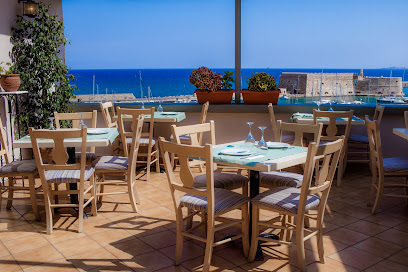
Chagiati
Discover authentic Cretan cuisine at Chagiati in Heraklion – where every dish tells a story of tradition and flavor.

Kanatelias Lunch
Experience authentic Greek cuisine at Kanatelias Lunch in Heraklion - where local flavors meet warm hospitality.

Archipelagos Seafood Restaurant
Discover exquisite seafood dining at Archipelagos Seafood Restaurant in Heraklion - where fresh ingredients meet traditional Cretan flavors.

Markets, malls and hidden boutiques
Talos Plaza
Discover Talos Plaza, a vibrant shopping mall in Heraklion, offering a mix of local and international brands, dining, and entertainment experiences.

Nike Factory Store Crete
Shop the latest in athletic apparel and footwear at Nike Factory Store Crete, where quality meets affordability in a vibrant shopping environment.

Bershka
Discover the latest trends in fashion at Bershka in Heraklion, where style meets affordability for all fashion enthusiasts.

SEPHORA IRAKLIO
Explore the luxurious world of beauty at Sephora Iraklio, your ultimate destination for cosmetics, skincare, and fragrances in Heraklion, Greece.

eFantasy-crete.gr
Explore eFantasy-crete.gr in Heraklion, your ultimate destination for games, comics, and collectibles in Crete.

J&S
Explore J&S in Heraklion for an eclectic mix of clothing, shoes, and everyday essentials, embodying the local shopping experience.

Antonella Boutique
Discover unique styles and local fashion at Antonella Boutique, a must-visit clothing store in the heart of Heraklion.

IQOS BOUTIQUE STORE ΗΡΑΚΛΕΙΟ
Visit the IQOS Boutique Store in Heraklion for the latest in vaporizer technology and innovative tobacco solutions that redefine smoking.

Tommy Hilfiger Heraklion
Explore the stylish offerings at Tommy Hilfiger Heraklion, where classic American fashion meets the vibrant spirit of Crete.

Irida Family Workshop
Explore the heart of Cretan craftsmanship at Irida Family Workshop, where unique souvenirs and local artistry await every traveler.

Κουλουβάχατα Pottery Workshop
Explore Κουλουβάχατα Pottery Workshop in Heraklion for unique handcrafted pottery and authentic Cretan souvenirs.

ZALO
Discover ZALO in Heraklion: A boutique gift shop showcasing unique Cretan souvenirs and local artisan crafts.

Woodpecker
Explore Woodpecker in Heraklion - your ultimate destination for unique gifts, toys, and local treasures that celebrate the spirit of Crete.

Block62
Discover Block62, Heraklion's ultimate outlet mall for fashion, family fun, and an unforgettable shopping experience.

AROMATTIKA The Store
Discover the charm of Greek craftsmanship at AROMATTIKA The Store, offering unique handmade embroidery and novelties in the heart of Heraklion.

Essential bars & hidden hideouts
Utopia
Discover Utopia in Heraklion, where chocolate dreams come true and every bite is a delicious adventure amidst a cozy atmosphere.

Xalavro Open Bar
Experience the vibrant atmosphere and creative cocktails at Xalavro Open Bar, a must-visit spot in Heraklion, Greece.

Swing Thing
Experience the vibrant nightlife of Heraklion at Swing Thing, a cocktail bar where expert mixology meets a lively atmosphere.

Polytechneio Cafe
Polytechneio Cafe in Heraklion offers a vibrant atmosphere, delightful drinks, and a taste of local culture, perfect for unwinding after exploring Crete.

Manjar Wise Food, Coffee & Wine Bar
Experience the finest wines and gourmet cuisine at Manjar Wise Food, Coffee & Wine Bar in Heraklion, a true culinary delight for every traveler.

The Bitters Bar
Experience the vibrant nightlife of Heraklion at The Bitters Bar, renowned for its creative cocktails and inviting atmosphere.
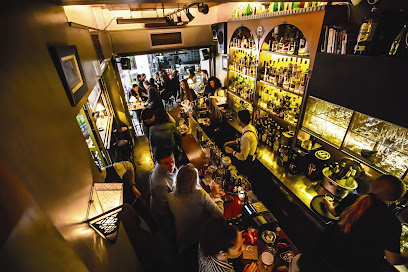
Jailhouse Rock Bar
Discover the lively Jailhouse Rock Bar in Heraklion, where local charm meets electrifying nightlife and unforgettable music.

Guernica
Discover Heraklion's nightlife at Guernica, a vibrant bar offering delicious drinks and a warm atmosphere in the heart of the city.

THINK TANK
Experience the lively ambiance and diverse flavors at THINK TANK, Heraklion's premier bar and bistro for tourists seeking a taste of local culture.

The Whistler Espresso Bar & More
Discover The Whistler Espresso Bar & More: A cozy bar and café in Heraklion offering exceptional coffee, cocktails, and a delightful dining experience.

La Brasserie
Discover La Brasserie in Heraklion: a bar and coffee shop that blends comfort with a lively atmosphere, perfect for unwinding after a day of exploration.

Craft Beer - Kapheneion
Discover Kapheneion in Heraklion – a craft beer haven with a diverse selection, live music, and a warm atmosphere for every beer lover.

Rock n Rolling Stone
Discover the vibrant nightlife at Rock n Rolling Stone in Heraklion, where great drinks, live music, and a lively atmosphere await every visitor.

Stone Project
Discover the vibrant nightlife at Stone Project, a premier cocktail bar in Heraklion where exquisite drinks and lively atmosphere blend seamlessly.

Take Five
Experience the vibrant nightlife of Heraklion at Take Five, a top bar and café offering delicious drinks and a lively atmosphere.

Travel experiences inspired by this city
Explore more travel diariesLocal Phrases
-
- HelloΓεια σας
[Yah sas] - GoodbyeΑντίο
[Adio] - YesΝαι
[Ne] - NoΌχι
[Ochi] - Please/You're welcomeΠαρακαλώ
[Parakalo] - Thank youΕυχαριστώ
[Efharisto] - Excuse me/SorryΣυγγνώμη
[Signomi] - How are you?Πώς είσαι;
[Pos ise;] - Fine. And you?Καλά. Εσύ;
[Kala. Esi;] - Do you speak English?Μιλάτε Αγγλικά;
[Milate Agglika;] - I don't understandΔεν καταλαβαίνω
[Den katalaveno]
- HelloΓεια σας
-
- I'd like to see the menu, pleaseΘα ήθελα να δω το μενού, παρακαλώ
[Tha ithela na do to menou, parakalo] - I don't eat meatΔεν τρώω κρέας
[Den troo kreas] - Cheers!ΥΓΕΙΑ!
[Yia] - I would like to pay, pleaseΘα ήθελα να πληρώσω, παρακαλώ
[Tha ithela na plirosso, parakalo]
- I'd like to see the menu, pleaseΘα ήθελα να δω το μενού, παρακαλώ
-
- Help!Βοήθεια!
[Voithia!] - Go away!Φύγε!
[Fige!] - Call the Police!Καλέστε την Αστυνομία!
[Kaleste tin Astinomia!] - Call a doctor!Καλέστε ένα γιατρό!
[Kaleste ena giatro!] - I'm lostΈχω χαθεί
[Eho hathi] - I'm illΕίμαι άρρωστος
[Eimai arrostos]
- Help!Βοήθεια!
-
- I'd like to buy...Θα ήθελα να αγοράσω...
[Tha ithela na agoraso...] - I'm just lookingΑπλά κοιτάω
[Apla kitao] - How much is it?Πόσο κοστίζει;
[Poso kostizi;] - That's too expensiveΑυτό είναι πολύ ακριβό
[Afto ine poli akribo] - Can you lower the price?Μπορείτε να μειώσετε την τιμή;
[Borite na meioste tin timi;]
- I'd like to buy...Θα ήθελα να αγοράσω...
-
- What time is it?Τι ώρα είναι;
[Ti ora ine;] - It's one o'clockΕίναι μία ώρα
[Ine mia ora] - Half past (10)Μισή (10)
[Misi (dekka)] - MorningΠρωί
[Proi] - AfternoonΑπόγευμα
[Apoyefma] - EveningΒράδυ
[Vradi] - YesterdayΧθες
[Hthes] - TodayΣήμερα
[Simera] - TomorrowΑύριο
[Avrio] - 1Ένα
[Ena] - 2Δύο
[Dio] - 3Τρία
[Tria] - 4Τέσσερα
[Tessera] - 5Πέντε
[Pente] - 6Έξι
[Exi] - 7Εφτά
[Efta] - 8Οχτώ
[Ochto] - 9Εννιά
[Ennia] - 10Δέκα
[Deka]
- What time is it?Τι ώρα είναι;
-
- Where's a/the...?Πού είναι ένας/η...;
[Pou ine enas/i...;] - What's the address?Ποια είναι η διεύθυνση;
[Pia ine i diefthinsi;] - Can you show me (on the map)?Μπορείτε να μου δείξετε (στο χάρτη);
[Borite na mou dixete (sto charti);] - When's the next (bus)?Πότε είναι το επόμενο (λεωφορείο);
[Pote ine to epomeno (leoforeio);] - A ticket (to ....)Ένα εισιτήριο (προς ....)
[Ena isitirio (pros ....)]
- Where's a/the...?Πού είναι ένας/η...;
History of Heraklion
-
Heraklion is most famously associated with the Minoan civilization, which thrived from approximately 2700 to 1450 BCE. The nearby palace of Knossos, believed to be Europe's oldest city, serves as a significant archaeological site. Excavations led by Sir Arthur Evans in the early 20th century revealed a complex of grand structures, frescoes, and artifacts that provide a glimpse into Minoan life. The legend of the Minotaur and the Labyrinth is also linked to Knossos, adding a mythological dimension to its historical importance.
-
Following the decline of the Minoans, the region that would become Heraklion saw the rise of various Greek city-states. During the Classical and Hellenistic periods, from around the 5th to the 1st century BCE, the area was influenced by the broader cultural and political developments of ancient Greece. Although less prominent than other Greek cities, Heraklion’s strategic location on Crete made it an important hub for trade and military activities.
-
Heraklion came under Roman control in 67 BCE and subsequently became part of the Byzantine Empire. The city, known as Heracleum during Roman times, continued to serve as an important port and administrative center. The Byzantine period, lasting until the 9th century, saw the construction of early Christian basilicas and other religious structures, many of which have left their mark on the city's architectural landscape.
-
In the early 9th century, Heraklion was conquered by Arab forces who renamed the city Chandax (or Khandaq). The Arabs fortified the city with robust walls and a deep moat, transforming it into a significant center of trade and piracy. This period lasted until 961 CE, when Byzantine forces recaptured the city under the leadership of Nikephoros Phokas. The Arab influence is still evident in the city's layout and some architectural remnants.
-
The Venetians took control of Heraklion in 1204, renaming it Candia. This period marked a time of significant growth and architectural development. The Venetians constructed the massive Fortress of Koules at the entrance to the harbor, along with other fortifications and public buildings. The period also saw the flourishing of arts and culture, with the city becoming a hub for the Cretan Renaissance. The influence of Venetian architecture can still be seen in Heraklion’s old town.
-
Heraklion fell to the Ottoman Empire in 1669 after a prolonged siege that lasted more than 20 years, one of the longest in history. Under Ottoman rule, the city experienced significant demographic and cultural changes. Many churches were converted into mosques, and the cityscape was altered to reflect Ottoman architectural styles. The Ottoman influence is still visible in various buildings and the city’s urban layout.
-
Heraklion was incorporated into the modern Greek state in 1913 following the Balkan Wars and the eventual collapse of Ottoman rule. The 20th century brought significant changes, including economic development, urban expansion, and modernization. Heraklion played a role in the resistance during World War II and has since developed into a vibrant city that balances its rich historical legacy with contemporary life.
Heraklion Essentials
-
Heraklion is the capital of Crete and is well-connected by air and sea. The Heraklion International Airport 'Nikos Kazantzakis' (HER) receives numerous domestic and international flights daily. Alternatively, you can arrive by ferry from Piraeus (Athens) or other Aegean islands at the Port of Heraklion, which is one of the busiest ports in Greece.
-
Heraklion offers various transportation options. The city center is compact and walkable. For longer distances, public buses operated by KTEL are reliable and cover most parts of the city and island. Taxis are readily available and relatively inexpensive. Car rentals are also a popular option, especially for exploring the island at your own pace. Biking is less common due to the hilly terrain and traffic, but some areas have bike rentals.
-
The official currency in Greece is the Euro (EUR). Credit and debit cards are widely accepted in hotels, restaurants, and shops. ATMs are plentiful throughout Heraklion, but it's advisable to carry some cash, especially for smaller establishments or in more remote areas. Tipping is customary but not obligatory; rounding up the bill or leaving a small tip is appreciated.
-
Heraklion is generally a safe city for tourists. However, petty crimes like pickpocketing can occur, particularly in crowded areas such as the central market and bus stations. Avoid poorly lit areas at night and keep an eye on your belongings. Always use registered taxis and avoid accepting rides from strangers. The area around the old port can be sketchy at night, so exercise caution.
-
In case of an emergency, dial 112, the European emergency number, for immediate assistance. Heraklion has several hospitals and medical facilities, including the University Hospital of Heraklion. Pharmacies are widely available and usually open from early morning until late evening. It is advisable to carry your European Health Insurance Card (EHIC) if you are from an EU country, or have travel insurance that covers medical emergencies.
-
Fashion: Do dress modestly when visiting religious sites; avoid overly revealing clothes. Religion: Do respect local customs; cover your shoulders and knees when entering churches and monasteries. Public Transport: Do validate your bus ticket upon boarding; don’t forget to carry small change. Greetings: Do greet with a handshake and say 'Kalimera' (Good morning) or 'Kalispera' (Good evening). Eating & Drinking: Do try local dishes like moussaka and souvlaki; don’t rush through meals as dining is a leisurely affair.
-
To experience Heraklion like a local, visit the central market on 1866 Street for fresh produce and local delicacies. Spend an evening at a traditional taverna to enjoy live music and Cretan cuisine. Don’t miss the opportunity to explore the nearby archaeological sites, including Knossos Palace. For a unique experience, take a walk along the Venetian Walls for panoramic views of the city.
Trending Landmark in Heraklion
-
Heraklion Archaeological Museum
-
Morosini Fountain
-
Rocca a Mare Fortress
-
Herakleion Venetian Port
-
Natural History Museum of Crete
-
Church of Agios Minas
-
Bembo fountain
-
Saint Titus Herakleion Holy Orthodox Cathedral Church
-
Nikos Kazantzakis Grave
-
Historical Museum of Crete
-
Venetian Walls of Heraklion
-
Museum of Ancient Greek Technology by Kotsanas
-
Kenouryia Porta
-
Venetian Loggia
-
Heraklion Lighthouse
Nearby Cities to Heraklion
-
Things To Do in Crete
-
Things To Do in Rethymno
-
Things To Do in Chania
-
Things To Do in Pyrgos
-
Things To Do in Santorini
-
Things To Do in Mykonos
-
Things To Do in Kos
-
Things To Do in Bodrum
-
Things To Do in Rhodes
-
Things To Do in Samos
-
Things To Do in Athens
-
Things To Do in Nafplio
-
Things To Do in Marmaris
-
Things To Do in Kalamata
-
Things To Do in Kusadasi
























